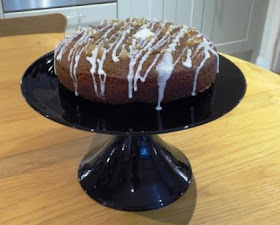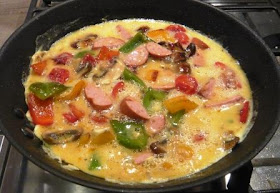How do you poach your eggs?
I have struggled with poached eggs for years, along with the dreaded scones and meringues. Having finally banished my scone nemesis and mastered meringues last year I am completely chuffed to say that - at last - I have worked out how to produce a decent poached egg. My mum always said that things come in threes and it appears that it counts for successes as well as failures or disasters. (Or buses.) Another of her sayings was "if at first you don't succeed, try again".
In the past I have tried every method going. Dropping the things into a saucepan full of swirling simmering water, which produced a kind of amoeboid blob with a detached yolk.
Nigella Lawson's method of dropping them from a cup with a dash of lemon juice into almost still, barely simmering water. That method was ok but not perfect as results were not reliable.
Years ago I bought a non stick poaching pan to which they stuck like glue, producing half a ragged poached egg for your toast. That went into the bin along with the bits of egg stuck to it - I couldn't bring myself to take it to the charity shop where someone might fork out a quid for it to end up with only half an egg every time.
I own a set of very snazzy and brightly coloured poaching pods, along with the scoop that allows you to lift them in and out of the pan without scalding your finger tips. They work but are a real faff, having to butter them first and still ending up with some of your egg refusing to come out.
They also produce an egg that's absolutely fine but shaped like a flying saucer, not natural looking like you get in a good restaurant.
One of my favourite starters at our local favourite restaurant is a poached egg served on black pudding on toast. The egg is perfect every time, shaped like it's been quenelled - and we all know what that means according to James Martin. The difference between a dollop and a quenelle is twenty quid. I did once ask the waitress how the chef did it and she looked at me like I had just emerged from a flying saucer. She said she would ask him but never returned to the table, sending someone else instead.
We have friends who have given us a full English breakfast a few times, skinny style, all grilled and poached instead of fried. The husband cooks the eggs and they are perfect every time. I have watched how he does it and it looks so easy. When I have tried it his way we get the amoeboid blob again.
The key to success seems to be, for me, after all, vinegar.
Nick has been averse to vinegar in the cooking of poached eggs after too many hotel breakfasts with vinegary eggs when he was working. But I have discovered that if you use white wine vinegar, not malt vinegar, you can barely taste it. In fact I defy anyone to know that vinegar has been used at all.
My tips for success are to get all your eggs shelled and ready in little cups or ramekins - this is probably not necessary if you only have two to poach but with more than two it allows them all to be dropped into the pan in quick succession so they are all cooked at the same time.
Boil the kettle and pour the water into a frying pan. Depth is not important except that it should be deep enough to cover the eggs. Slosh in a good splash of white wine vinegar, probably about a tablespoonful. Bring back to the boil, reduce the heat so that the water is simmering gently then slide the eggs in carefully one at a time, from very close to the water, so that they stay where you have put them. That way you know which one went in first and will be cooked first with just a few moments between each one.
Then leave them alone, except maybe to spoon water gently over the top if they're not quite completely covered. No pushing or stirring. They are cooked when the whites are no longer translucent but white, which will be about five minutes for an average egg. Turn off the heat.
Using a slotted spoon, slide it under the egg that went in first and gently lift it out onto your toast, plate (or a sheet of kitchen paper first if you want to drain it of water completely). You might have to ease it gently off the bottom of the pan if it's stuck slightly but so far I have not burst a yolk doing this - gently does it. Repeat with the other eggs in the right order - the water will still be hot so they will continue cooking until you lift them out. Stand back and admire the beauty of your creation triumphantly.
Season with salt and pepper and enjoy!



















